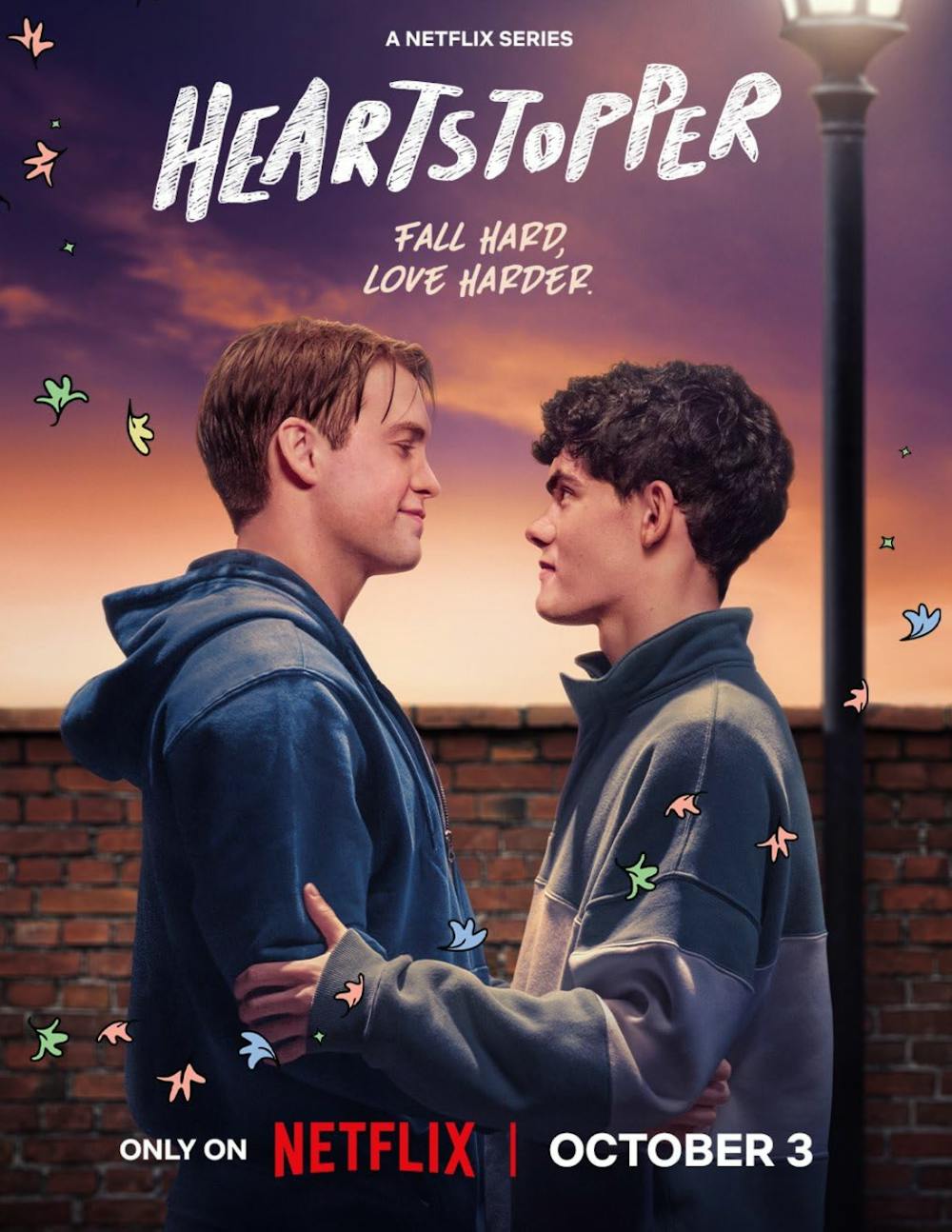By Heather Halperin
Correspondent
Netflix's original “Heartstopper” is back with its third season. After its release on Oct. 3, the show continues to capture the hearts and minds of its watchers through the comforting yet mature feelings it brings out.
The first season of this show explored the beginning of Nick and Charlie’s relationship. The two of them form an unlikely friendship that evolves into something more. As the season continues, the two of them slowly realize their feelings for one another and begin their relationship. The second season begins with the difficult stage of their relationship, as Nick struggles to figure out his sexuality and come out.
Season three continues to have a warm and joyful undertone, but it does dive into more mature topics, such as the different kinds of mental illnesses the characters struggle with.
While Nick and Charlie continue to be the center of this story, season three gives more insight into the other characters in their friend group. This season allows the audience to get more of an inside look into all the relationships that are included in this show. In addition to all the struggles, each character is going through, whether it be their own sexual orientation, gender identity or romantic relationships.
Season three begins with a discussion of the mental illnesses Charlie has been struggling with since last season. Charlie begins to open up about the fact that he is struggling with anorexia and obsessive compulsive disorder. This brings about new challenges for Nick and Charlie's relationship that have not been seen before.
This plays into Nick's urge to put others before him, causing him to put Charlie's struggles before his own. This causes Nick to forget about his own problems, like what universities he will be applying to and what his future is going to look like.
While this creates rifts in their relationship, it also causes them to form a stronger emotional connection. All this plays into Nick and Charlie coming to terms with wanting to say “I love you” to one another — along with wanting to take their relationship to a more intimate level.
The audience also gets to see Elle and Tao grow stronger as a couple, even though they are each going through their own hardships. The audience learns about Elle’s experiences as a trans woman, with her art on Instagram has been brought into the limelight. On the other hand, Tao losing his father at a young age triggers his fear of losing Elle as well.
Darcey and Tara also go through difficult times this season. Darcy struggles with figuring out her gender identity, and Tara begins to suffer from the anxiety that comes with figuring out her future after high school. Finally, the audience gets an inside look at Imogen and Isaac continuing to figure out their sexual identities. Towards the end of the season, Tori, Charlie’s sister, starts to experience her own newfound romance with a boy named Micheal.
The newest season of this show does an excellent job of diving into mature topics in a careful yet relatable way. These struggles are not sugar coated, however the show depicts them in a comforting and understanding way.
This season, like the earlier ones, has a great representation of the LGBTQ+ community. Additionally, it does a wonderful job of creating awareness for the different mental illnesses teenagers struggle with in this generation. This is done by not downplaying these mental illnesses.
Whether it comes to anxiety, depression, OCD or eating disorders, all are represented this season along with how they can affect the person struggling and those around them.
This new season makes anyone who is struggling with their mental health, sexual orientation or gender identity feel represented. This show makes unseen communities feel like they have people who understand everything they are going through.
“Heartstopper” continues to be an amazing display of healthy queer relationships, with the topic being placed at the forefront of the show, rather than something that is pushed to the background. While season four has not been announced, it is something that the TV landscape needs in order for this inclusivity to continue.







